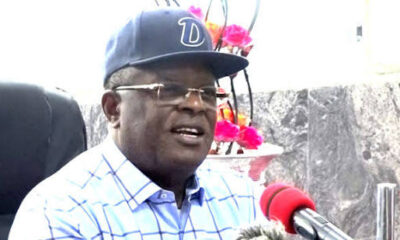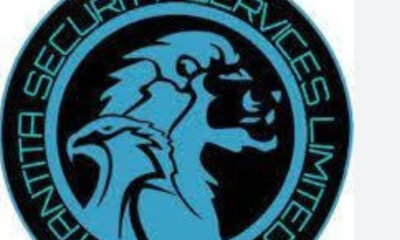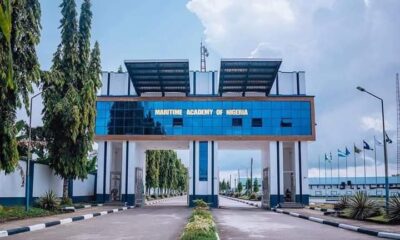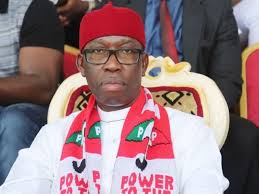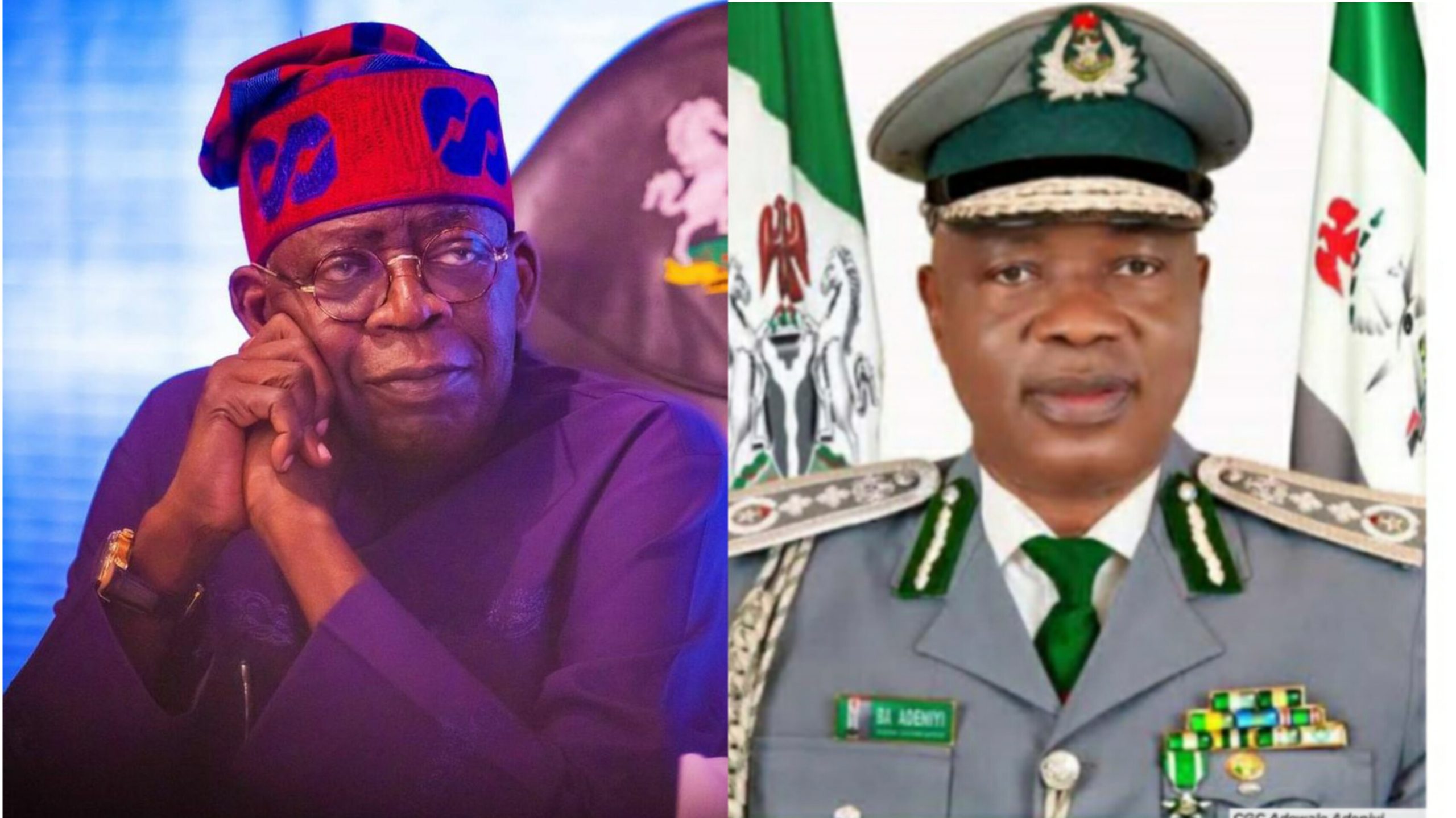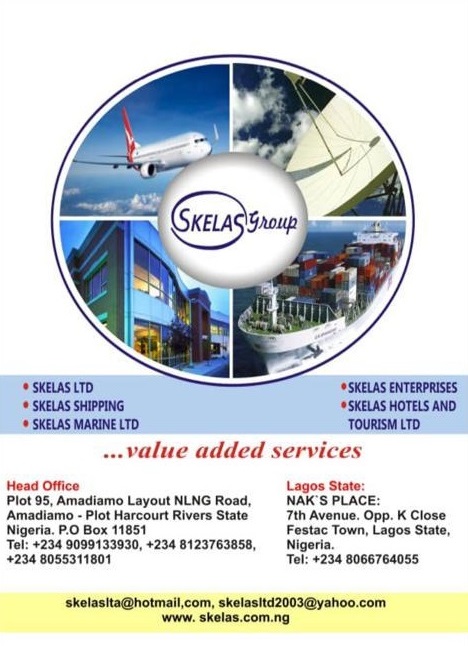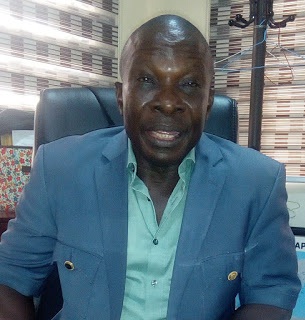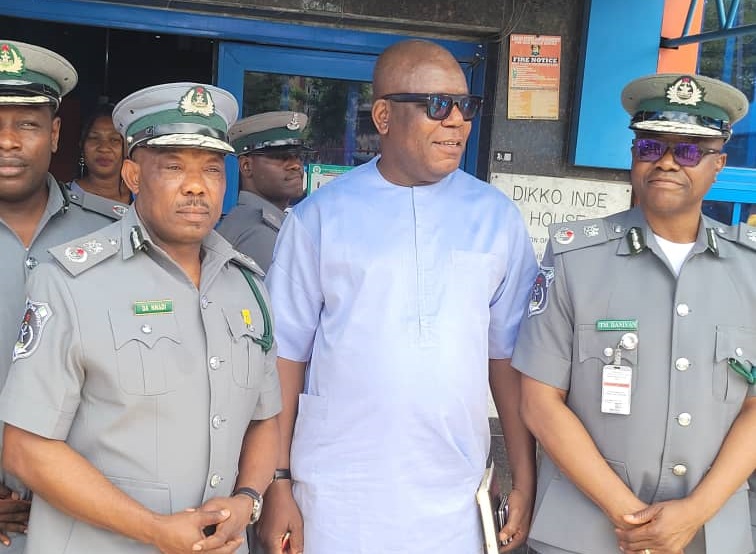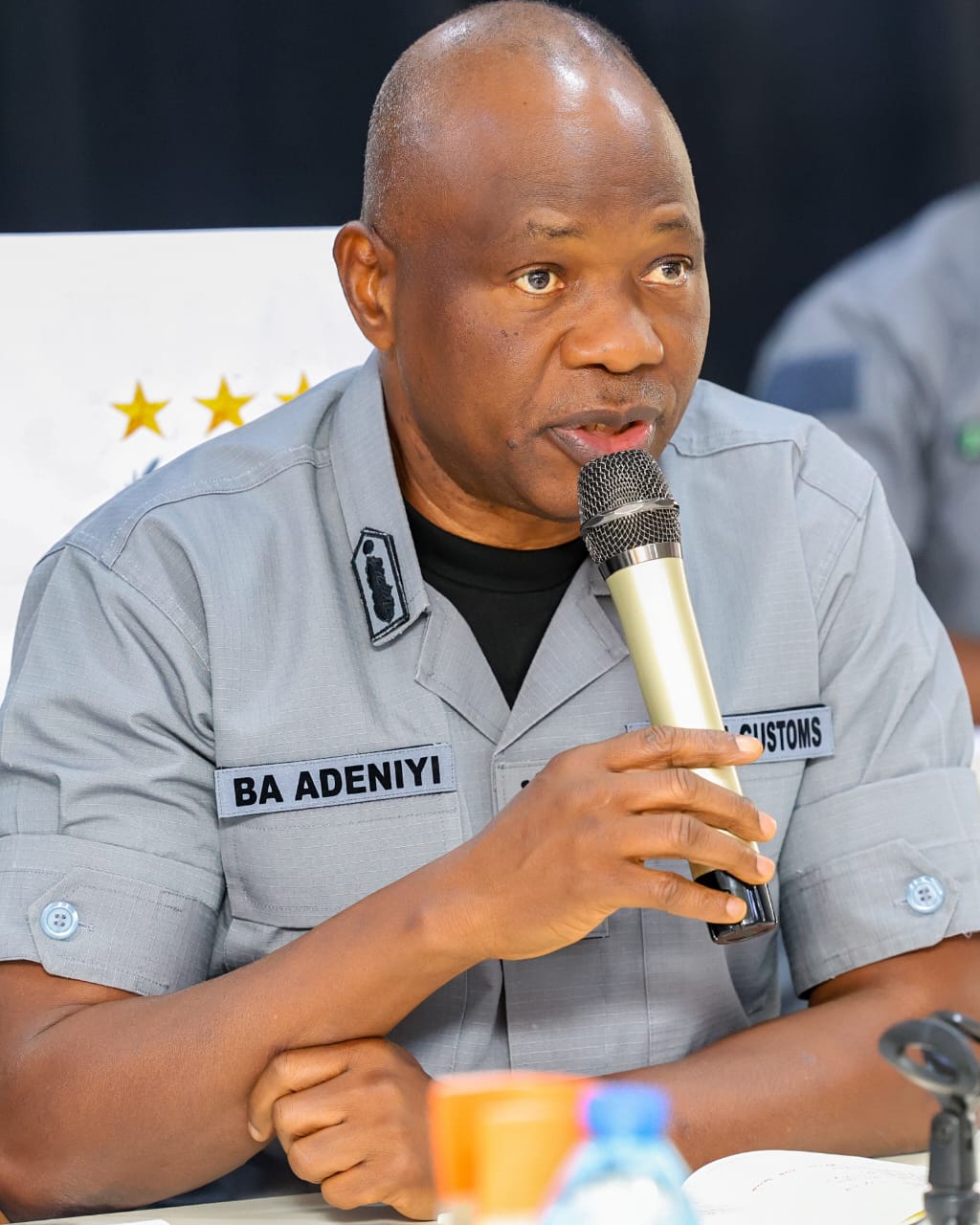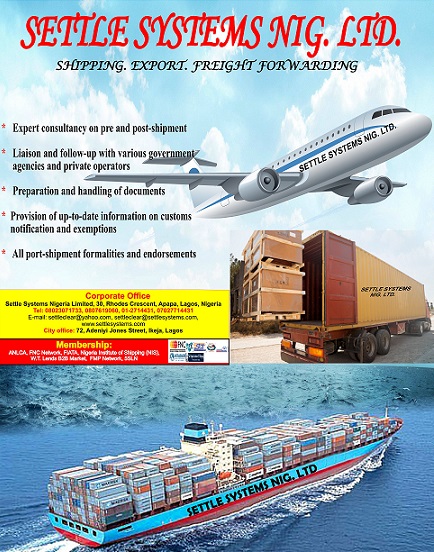Analysis
Behind the Ferry Curtains: Untangling the Politics of Lagos ‘Omi-Eko’ Launch
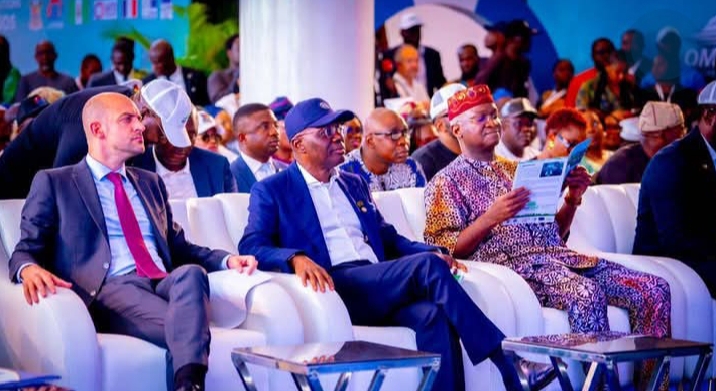
The launch of the Omi-Eko project on Friday was preceded by official media frenzy, and perhaps, for good reasons. Unarguably, the project which is a necessity and long overdue because of the vast, all-encompassing Lagos intra-community waterways , it has also proven to be one ambitious metropolitan transport scheme.
The Omi-Eko project represents clear official thinking and strategic mapping that not only floats into the future but which on paper has the promise of redefining urban transportation beyond Lagos and across the national frontier, into the sub region and beyond.
Said to be initiated and led by Lagos State, it is a bold leap into sustainable water transportation , but made possible through strategic international partnerships, particularly with the EU, AFD, and EIB, and which international funding effort was credited to President Ahmed Bola Tinubu; as the outcome of one of his series of trips to France.
It is just this coouration of collaboration or put more succinctly, this apparent joint venture as it were, between the federal and Lagos state. Why would President Tinubu engage in special diplomatic and bilateral talks for a unique transportation template for Lagos, while ignoring other states?
If President Tinubu is actually involved in the Omi-Eko project, perhaps it presents a duty to fully understand the ownership of the project, beyond presidential intervention which is not uncommon or strange; but which is not the case here. Those who attributed the success of international support for Omi-Eko Or were unambiguous, and stated clearly that the project planning was one reason President Tinubu has frequented Paris. Or was the president’s name simply dropped to achieve an innocuous political gain or even mischief?
In this report, Eguono Odjegba explores the matter alongside other critical issues associated with the Omi-Eko ferry scheme.
Who Owns the Project?
Official records say the Lagos State Government, through the Lagos State Waterways Authority (LASWA), is the primary implementer of the Omi-Eko project. However, the €410 million funding—comprising a €60 million EU grant and €350 million in subsidized loans from the French Development Agency (AFD) and European Investment Bank (EIB) was secured via the EU’s Global Gateway Initiative.
While Governor Babajide Sanwo-Olu emphasized the project as a state-led effort, French Minister Jean-Noel Barrot and EU Ambassador Gautier Mignot confirmed that the funding was a direct outcome of President Tinubu’s bilateral engagements with French President Emmanuel Macron. This fusion of state implementation and federal diplomacy creates a hybrid ownership narrative: Lagos-led, federally-enabled, and internationally-backed.
Who Benefits First?
Lagos State Transport Commissioner, Seun Osiyemi’s statement that the project will “first serve Lagosians” is therefore accurate both in scope and logical thinking. The infrastructure—140km of ferry routes, 25 terminals, and 70 hybrid electric ferries is designed to ease congestion, reduce travel time, and improve air quality for Lagos residents. However, EU officials noted that the project is part of a broader West African transport corridor strategy, with four of twelve strategic waterways located in the region. So while Lagos is the immediate beneficiary, the long-term vision is regional.
Will the Project Stall or Funds Get Diverted?
This concern is valid and objective given Nigeria’s history of stalled infrastructure projects. However, from the financing template, the Omi-Eko project’s funding structure offers some safeguards:
*Subsidized loans and grants from EU institutions come with strict disbursement and accountability protocols.
*EU oversight and milestone-based funding reduce the risk of fund diversion.
*Technology transfer and capacity building for LASWA and related agencies suggest long-term institutional strengthening.
Indeed, former Governor Babatunde Fashola’s optimism about the project’s sustainability stems from these international safeguards, though local political will and transparency will remain critical.
Is Lagos Setting the Pace in Africa?
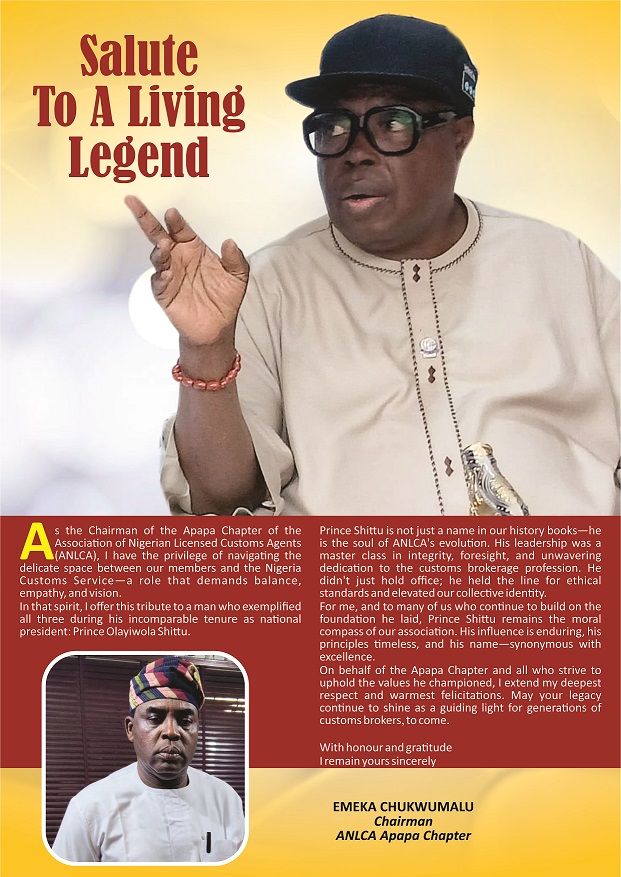
Governor Sanwo-Olu’s claim that Lagos is “setting the pace” is only partially true. While other African cities like Cairo and Cape Town have explored water transport, perhaps Lagos is the first to launch a continent-scale inland waterways project with such a large EU-backed investment with proposed hybrid electric fleet. The integration of climate goals, smart design, and multimodal connectivity makes it a model for sustainable urban transport in Africa.
A Fusion of Ambition and Diplomacy
The Omi-Eko project is not just a transport scheme—it’s a symbol of Lagos’ urban evolution, believed to have been enabled by federal diplomacy and global partnerships. Clarity on roles is essential: Lagos drives the implementation, Tinubu’s diplomacy unlocked the funding, and the EU ensures accountability. The challenge now lies in execution, transparency, and ensuring that this “covenant with the people” doesn’t become another abandoned promise.
Since the fear of funds mismanagement has been partially addressed based on suggestion that the EU which provided the loans are expected to participate as both technical and development partners and thus ensure accountability, other critical issues that requires mentioning includes:
Channelization
As indicated during the launch, channelization is prioritized in the Omi-Eko project not because Omi-Eko routes are inactive, but to standardize, deepen, and secure them for high-capacity electric ferries. Despite the fact that many Lagos waterways are already in use, the Omi-Eko project emphasizes channelisation and dredging of 140km across 15 ferry routes for several reasons:
*Technical Requirements for New Vessels: The project introduces 70 hybrid electric ferries, which require consistent depth, width, and navigational clearance to operate safely and efficiently. Existing informal routes may be too shallow, narrow, or obstructed for these vessels, especially during low tides or rainy seasons.
* Infrastructure Integration: Channelization supports terminal construction, electric charging stations, and maintenance depots, ensuring seamless integration with land transport systems. It also enables route marking and traffic separation, reducing collision risks in busy corridors.
*Environmental and Climate Goals: Proper dredging and channelization help manage sediment flow and erosion, aligning with the project’s climate resilience objectives. It also supports CO₂ reduction targets by optimizing ferry speeds and fuel efficiency.
Whilst the state government didn’t particularly dwell on robust safety protocols and hydrographic charting during the launch, addressing operational risks, especially for informal operators is critical. Channelization alone doesn’t guarantee safety, the informal boat sector—which still carries thousands daily—faces risks due to the following:
-Lack of hydrographic charts for accurate navigation
-Poor enforcement of safety standards (life jackets, vessel inspections)
-Unregulated operators with limited training
While LASWA has promised technology transfer and capacity building, there’s no clear roadmap yet for Real-time route monitoring, Emergency response systems, and Standardized vessel certification.
For above reasons, a balanced approach is required: Channelization for infrastructure and vessel compatibility, hydrographic survey charting to guide all operators, not just formal ferries, safety audits and enforcement across both formal and informal sectors, and public education and operators training to reduce accidents.
More so, there must be technical requirements for new vessels. With the proposed 70 hybrid electric ferries, the requirements must map consistent depth, width, and navigational clearance to operate safely and efficiently. Conversely, existing informal routes may be too shallow, narrow and hence may obstruct these vessels, especially during low tides or rainy seasons.
Channelization also supports terminal construction, electric charging stations, and maintenance depots, ensuring seamless integration with land transport systems. It also enables route marking and traffic separation, reducing collision risks in busy corridors.
Conclusion
The Omi-Eko project is ambitious, but its success depends on not just making political statements and or building routes, but ensuring that transparency is as key as making its operations is etched in safety, inclusive and navigable for all.



